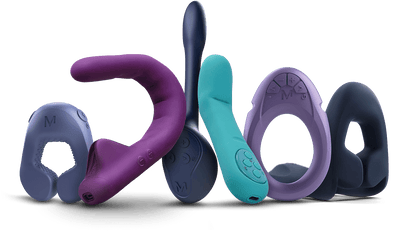Putting the Sex Back Into Safe Sex
Sex is a large part of our everyday lives. It makes us feel great, drives our relationships, and creates our families. We believe that to understand sex is to understand people. Unlocking pleasure ultimately makes for safer sex and a better quality of life.
It is undeniable that sex is becoming more mainstream. There is no greater example of this than 50 Shades of Grey, which has quickly become both a literary and film phenomenon. E L James has persuaded many women and young people to part with their cash and read what many consider ‘soft porn’ in a public place.
Taking centre stage on websites such as LoveHoney and Ann Summers, she has also driven sales within the sex toy market, with branded whips, blindfolds, and toys
This growth in interest has been matched at the checkout: the sex toy industry is worth over £5.5bn worldwide today. In 2012, IBISWorld suggested that the release of the 50 Shades book led to a 7.5% increase in sales of sex-related products.
Even last year, LoveHoney estimated that an extra £50m was spent on sex-related products because of the books and film in production. Here in the UK, we are avid sex toy buyers, with the market worth over £250m per year, and expected to grow significantly.
However, there is a slightly concerning side to this development. While sex toy sales have surged, so have injuries caused by their incorrect use. Recent data from the Consumer Product Safety Commission showed that injuries involving sex toys have doubled since 2007. With more men than women ending up in the emergency room.
The data revealed that your safe sex is being jeopardised with “83% require ‘foreign body removals’,” by either real or makeshift sex toys.
Why is safe sex not a priority?
It could be a lack of information out there that explains how adult toys can be used in a safe way.
However, a quick Google search shows user guides from some of the industry’s biggest players, such as Durex and LoveHoney, which inform readers with all kinds of advice from using lube to toy cleanliness.
But while the information is out there, is anyone reading it? It’s not enough to just make the information available; it needs to be appealing, accessible and understandable. After all, there’s no point in having a manual if no one reads it.
What’s more, manufacturers may struggle to communicate with their consumers in a way that is informative and yet set in the right tone. We should be including sex toys in sex education.
Despite our increased appetite to buy and experiment with toys, we still don’t feel comfortable talking about them. We’d rather turn to Google for answers. As Professor Dan Ariely puts it, “Google is a reflection of what people don’t know and need extra information about.”
Following this idea, an interesting study by Seth Stephens-Davidowitz on searches relating to sex found that there is a whole lot of anxiety out there when it comes to sex. Seth’s research led him to conclude that men and women are united in their insecurity and confusion about sex. This really underlines the need for better and more open discussion around sex and sexuality.
So, how do we overcome this and put the safe back into safe sex?
How do we come to a world where people are getting the information they need? How do we help them feel empowered to find their pleasure in a safe and fun way?
It goes without saying that companies need to take responsibility for their customer’s wellbeing. Sex toy firms have an obligation to provide users with safety advice, however should endeavour to provide exemplary customer service, engaging them across different media and in a clear, open way.
Ultimately, for us, it comes down to communication. We think it’s great that people are experimenting more with pleasure. However, conversations about sex and toys need to catch up with modern times.
We need to build a culture where sex toys are no longer that dirty little secret. Where companies feel like they can really engage with consumers about proper usage and safety of their toys. Only then can we get it right across the board, reduce injuries, and avoid a whole lot of embarrassment!















































